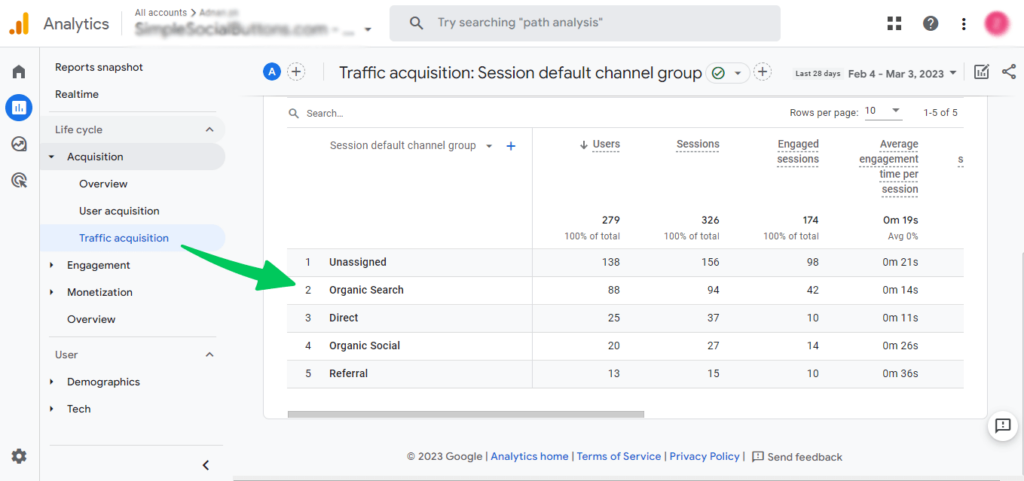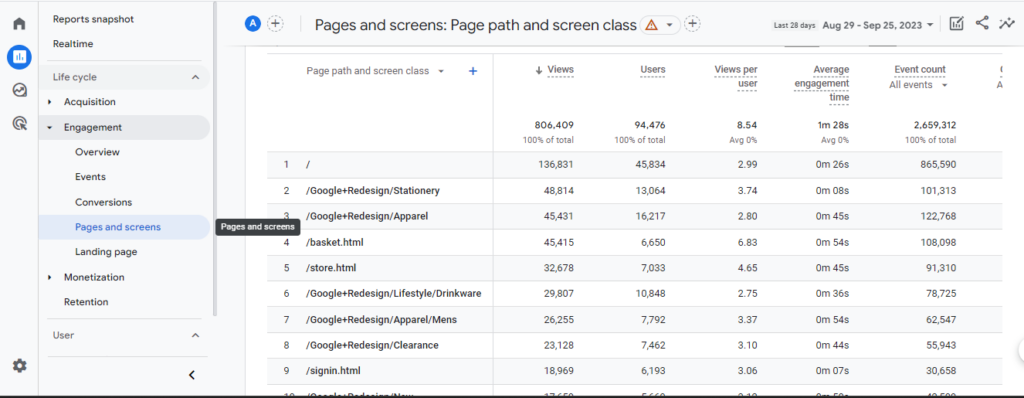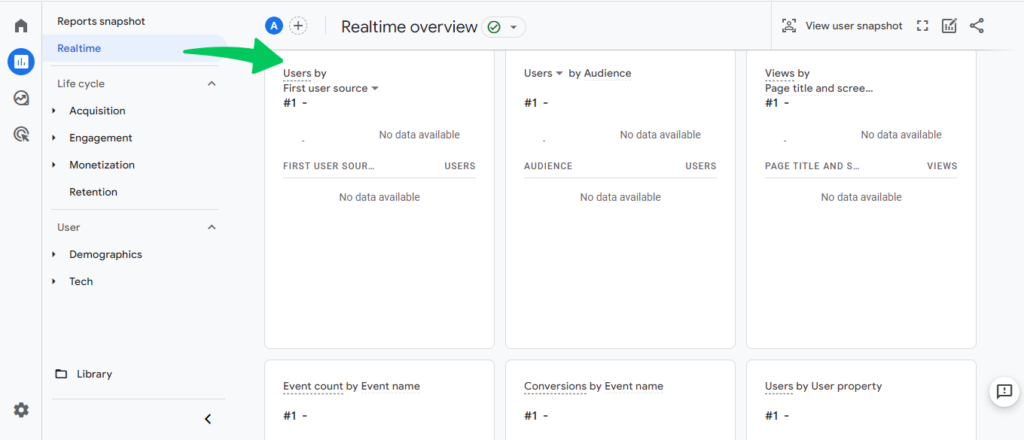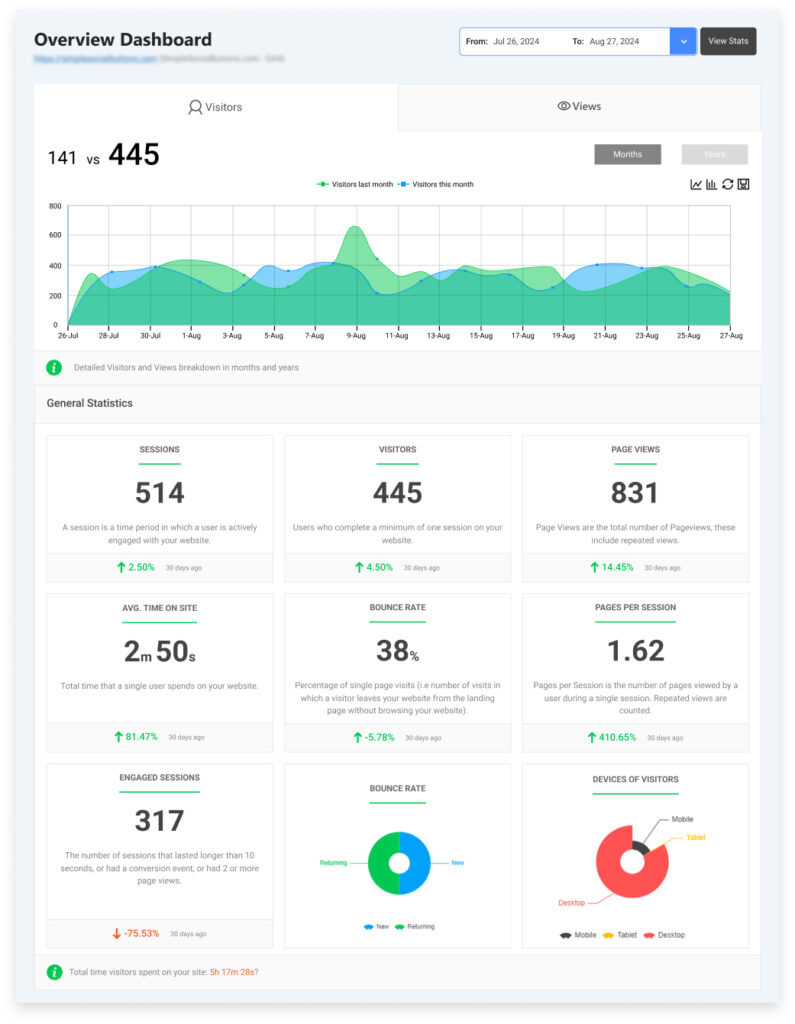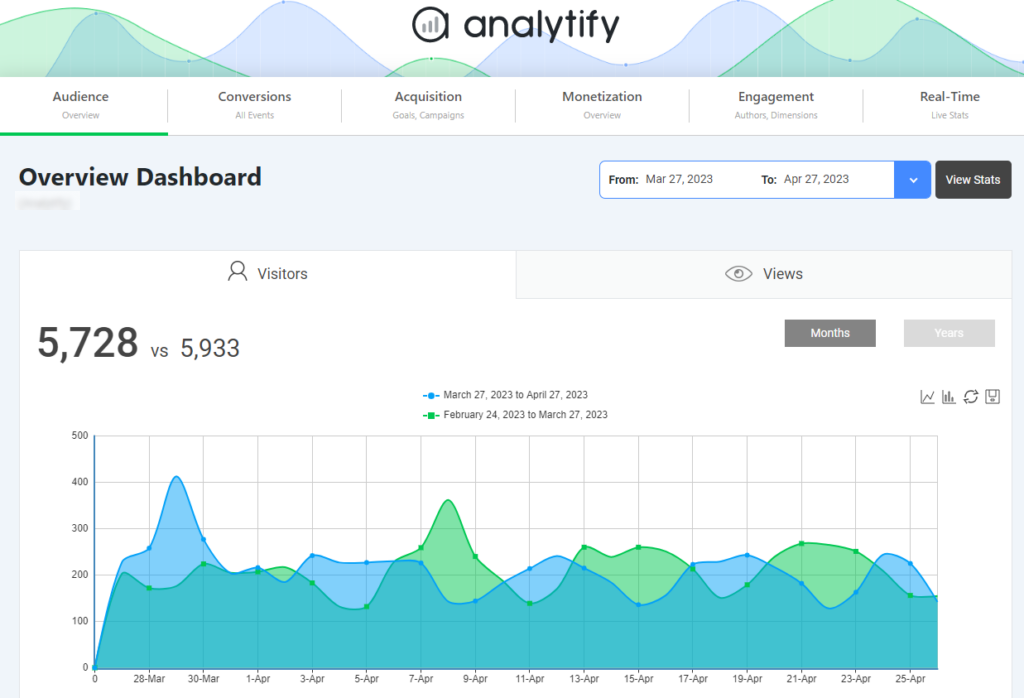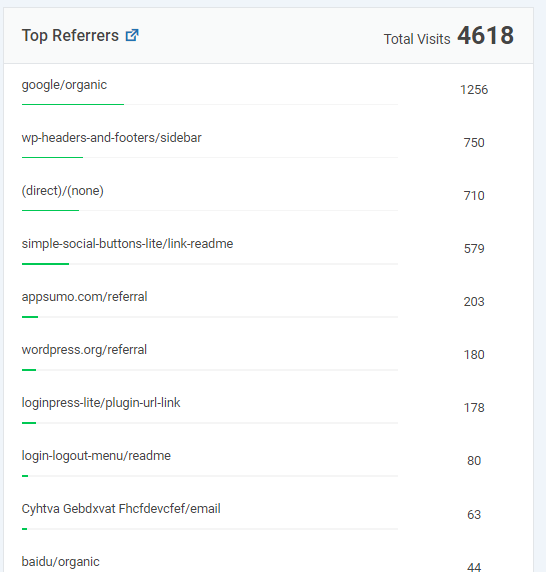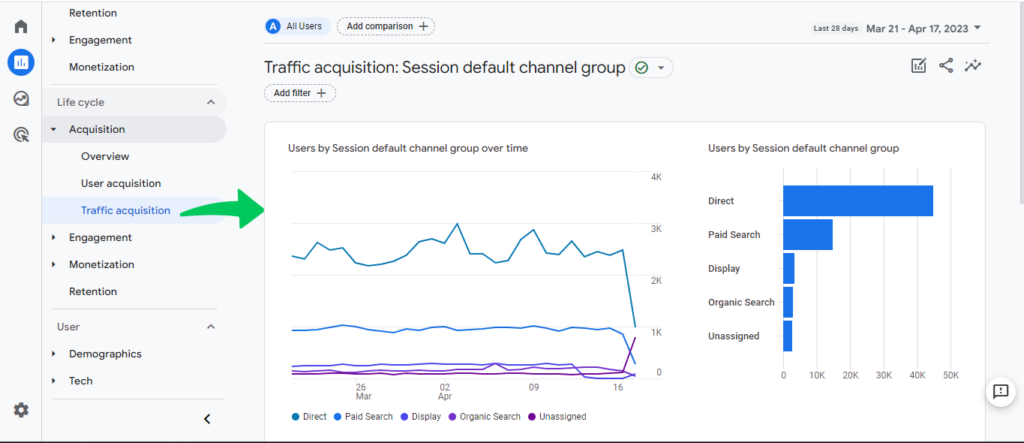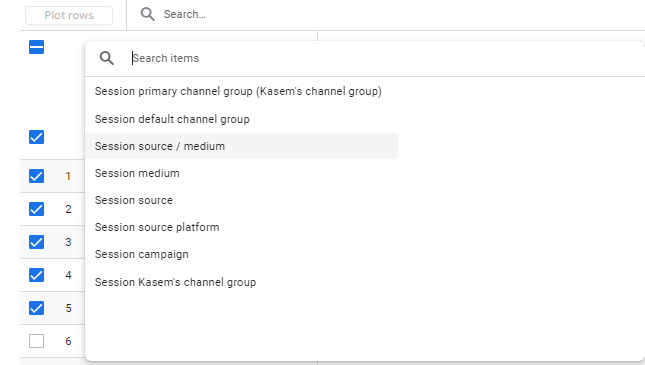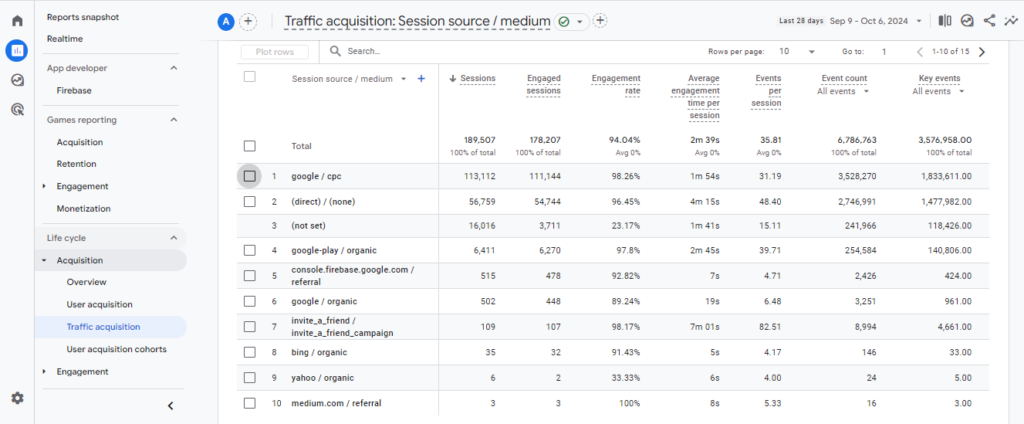
How to Track Website Traffic with Google Analytics 4
Tracking your website’s traffic is like keeping an eye on the heart of your online presence. Whether you’re a small business owner, a marketer, or a blogger, understanding how to track website traffic is essential. It tells you where your visitors are coming from, what they’re doing on your site, and whether they’re engaging with your content or simply bouncing off.
In this guide, we’ll explore how to track website traffic with Google Analytics 4 (GA4). GA4 provides more in-depth insights and customization than its predecessor, making it easier to access the data you need to grow your site.
Let’s learn how!
How to Track Website Traffic with GA4 (TOC):
Why Tracking Website Traffic is Essential
It is important to track your website with Google Analytics for better growth.
Imagine running a physical store. You’d want to know things like:
- How many customers visit each day
- Which products they look at the most
- Which entrances they use
- How long they stay in the store
Now, your website is no different. You should track website visits. By tracking traffic, you can:
- Understand Visitor Behavior: You get to know who visits your site, how long they stay, and what pages they view.
- Improve Your Marketing Campaigns: Let’s say you’re running ads or email campaigns. By tracking website traffic with Google Analytics for website traffic, you can see if those efforts are actually bringing in visitors.
- Discover High-Performing Content: Some blog posts or pages on your site will naturally do better than others. Understanding how to track hits on a website lets you identify which content drives the most engagement so you can create more like it.
- Optimize Traffic Channels: Not all traffic is created equal. Knowing how to check website traffic on Google Analytics helps you focus your efforts on the most effective channels.
Before you start tracking your website traffic, you need to set up a Google Analytics account. Follow this step-by-step guide to set up your first GA4 account.
Tracking these metrics is like having a compass that guides your website in the right direction. You can make informed decisions based on real data rather than guessing.
| Benefits | Explanation |
| Visitor Behavior Insights | Know where your visitors come from, how long they stay, and what they do on your website. |
| Marketing Campaign Measurement | Track how well your ads, social media, or email campaigns are driving traffic to your site. |
| Content Optimization | Identify the pages and posts that are resonating the most with your audience. |
| Channel Optimization | Focus on high-performing channels and optimize those that aren’t driving much traffic. |
Setting Up Google Analytics 4 to Track Website Traffic
Before you can start reaping the benefits of tracking website traffic, the first step is setting up Google Analytics 4 (GA4) on your site. Don’t worry—it’s easier than you think! Whether you’re a seasoned website owner or just starting, GA4 provides a more intuitive way to track your website’s performance.
Here’s a simple step-by-step guide to getting started.
1. Create a Google Analytics 4 Account
If you haven’t already, you’ll need to create a GA4 property. This property is where Google Analytics will store all your traffic data.
- Go to Google Analytics and sign in (or sign up if you don’t have an account).
- In the Admin section, click “Create Property.”
- Choose Google Analytics 4 as your property type.
- Enter your property name, time zone, and currency.
- Click Next and follow the instructions to set up your property.
Read our complete guide on How to set up GA4 property for more details.
2. Install the GA4 Tracking Code on Your Website
Now that your property is ready, it’s time to install the tracking code on your website. This code will allow GA4 to start collecting data so you can see how many people visit your site and what they do once they’re there.
If you use Analytify, you can skip this process of manually adding code. Analytify takes care of these codes itself.
Analytify is a popular WordPress plugin that simplifies the integration of Google Analytics 4 (GA4) with your website, making it much easier to track analytics without manually adding any tracking codes to your site.
Join 50,000+ beginners & professionals who use Analytify to simplify their Google Analytics!
3. Configure Key Reports for Tracking Website Traffic
GA4 comes with a variety of reports, but you’ll want to focus on the ones that help you understand your traffic sources, visitor behavior, and site engagement.
Here’s a quick list of the key reports you’ll want to familiarize yourself with:
- Traffic Acquisition: This report shows where your visitors are coming from, such as Google search, social media, or referrals.
- Page and Screen Engagement: See how long visitors are staying on your site, and which pages they’re viewing.
- Realtime Report: Monitor who is on your site in real-time, which is especially helpful when running promotions or launching new content.
How to Track Website Traffic in WordPress Dashboard
Analytify is the best WordPress plugin for Google Analytics, making using Analytics really easy. You don’t have to worry about hiring a developer or someone who knows analytics.
As mentioned in the steps of the previous section Analytify lets you easily add Google Analytics to your WordPress site without any coding required. Just set it up for advanced tracking and view the most important traffic reports within your WordPress dashboard.
Once installed and connected, head to Analytify >> Dashboard in your WordPress admin sidebar to view the traffic analytics. The dashboard provides an easy-to-understand overview of your website traffic.
Review Website Traffic Data:
- In the dashboard, you’ll see key metrics such as:
- Sessions: The number of visits to your website.
- visitors: The number of visitors.
- Page Views: Total pages viewed.
- Bounce Rate: Percentage of visitors who leave after viewing only one page.
- Average Session Duration: The average time users spend on your site.
Filter Data by Date Range:
- You can customize the date range to view traffic for a specific period by selecting the date filter in the top-right corner of the dashboard.
Monitor Real-Time Traffic:
- To view live traffic, go to the Real-Time section of the Analytify dashboard, which shows current visitors, pages they are on, and their locations.
Analyze Traffic Sources:
- You can break down traffic by traffic sources to see where your visitors are coming from, such as organic search, direct, social media, or referral links.
How to Track Website Traffic in Google Analytics 4
Learning how to track website traffic means getting familiar with the data that Google Analytics provides, which allows you to make strategic decisions for your website.
1. Navigating to the Traffic Acquisition Report
The Traffic Acquisition report is your go-to for understanding how to track site traffic. This report tells you where your visitors are coming from: organic search, social media, referral links, or direct traffic.
Steps to Access the Traffic Acquisition Report:
- Log in to Google Analytics 4.
- In the left-hand menu, go to Reports » Acquisition » Traffic Acquisition.
- Here, you’ll see a breakdown of your website’s traffic by source and medium.
- For example, you’ll be able to see if most visitors are coming from Google search, Facebook, or directly typing in your website URL.
Key Metrics to Focus On:
- Users: The total number of individual visitors to your site.
- New Users: How many of these visitors are new (first-time visitors).
- Sessions: Total interactions on your site, which may include multiple pageviews.
- Session Duration: The average amount of time visitors spend on your site.
Tracking Website Visits and User Engagement
Now that you’ve explored the basics of how to track website traffic in Google Analytics 4, it’s time to dive deeper into tracking individual website visits and understanding user engagement. By learning how to track hits on a website and monitor user behavior, you’ll be able to optimize your content and enhance the user experience on your site.
In this section, we’ll cover how to use reports like Pages and Screens, and Events in GA4 to get a more detail view of your visitors’ actions.
1. Using the Pages and Screens Report
The Pages and Screens Report shows how individual pages on your website are performing. This report shows which pages your visitors are viewing the most and how they are interacting with those pages.
Steps to Access the Pages and Screens Report:
- In the GA4 dashboard, go to Reports » Engagement » Pages and Screens.
- This report will show you a list of your website’s most visited pages, along with metrics like views, users, and average time spent on page.
This report is perfect for identifying which content resonates with your audience and which pages might need improvement. For example, if you notice that one of your blog posts has a high pageview count but low engagement time, it may be a sign that the content isn’t holding your audience’s attention.
Track Website Traffic with Google Analytics (FAQ)
1. What is the best way to track website traffic using Google Analytics 4?
To track website traffic using Google Analytics 4 (GA4), set up a GA4 property for your site, install the tracking code, and access key reports like the Traffic Acquisition and Realtime reports. These reports help you see where your visitors are coming from, what pages they view, and how they interact with your site.
2. How can I check where my website traffic is coming from in Google Analytics 4?
You can check where your website traffic comes from by accessing the Traffic Acquisition report in GA4. This report shows a breakdown of traffic sources such as organic search, direct visits, social media referrals, and more. Navigate to Reports » Acquisition » Traffic Acquisition to see the details.
3. What is the difference between Users and Pageviews in Google Analytics 4?
In Google Analytics 4, Users represent the unique visitors to your website, while Pageviews refers to the total number of pages viewed. A single user can generate multiple pageviews if they visit more than one page during their session.
4. How do I set up conversion tracking in Google Analytics 4?
To set up conversion tracking in GA4, go to Configure » Conversions and create a new conversion event. You can define key actions like form submissions, purchases, or newsletter sign-ups as conversions, allowing you to track how well your site achieves its goals.
5. Can I track real-time website traffic with Google Analytics 4?
Yes, GA4 offers a Realtime report that allows you to track website traffic as it happens. This report shows live data on how many visitors are on your site, which pages they view, and where they are located.
6. How can I monitor traffic for specific pages in Google Analytics 4?
To monitor traffic for specific pages, use the Pages and Screens report in GA4. This report shows you which pages on your website receive the most views and how users engage with those pages. Navigate to Reports » Engagement » Pages and Screens to view this data.
Final Thoughts
In this article, we explored how to track website traffic effectively using Google Analytics 4. We began with the importance of monitoring website traffic, including understanding visitor behavior, improving marketing campaigns, and optimizing content. Then, we covered the step-by-step process of setting up GA4, from creating a property to installing the tracking code on your website.
We hope this article helped you understand how to track website traffic with Google Analytics 4.
You may also like to read 21+ Ways To Increase Website Traffic on WordPress.



